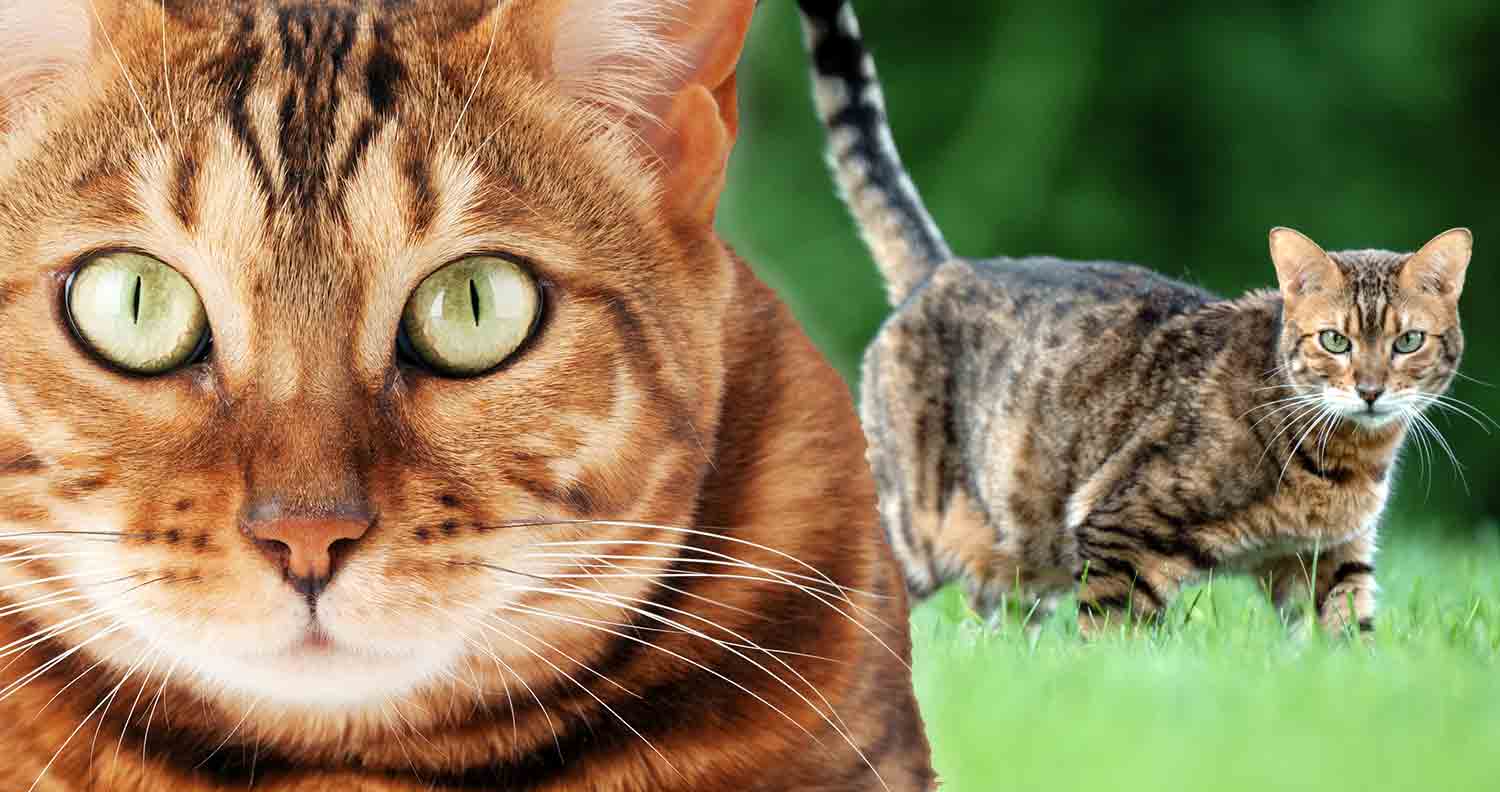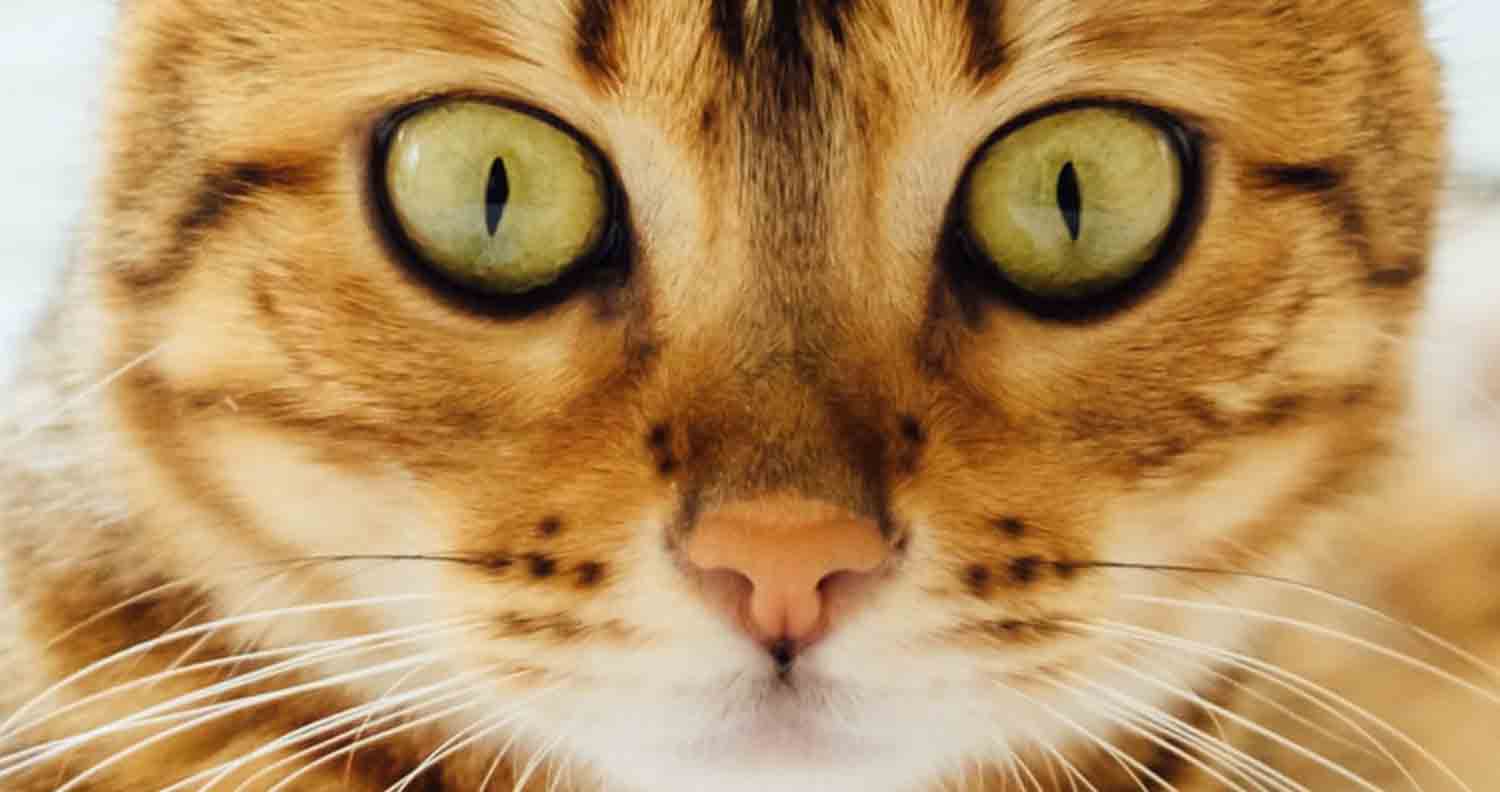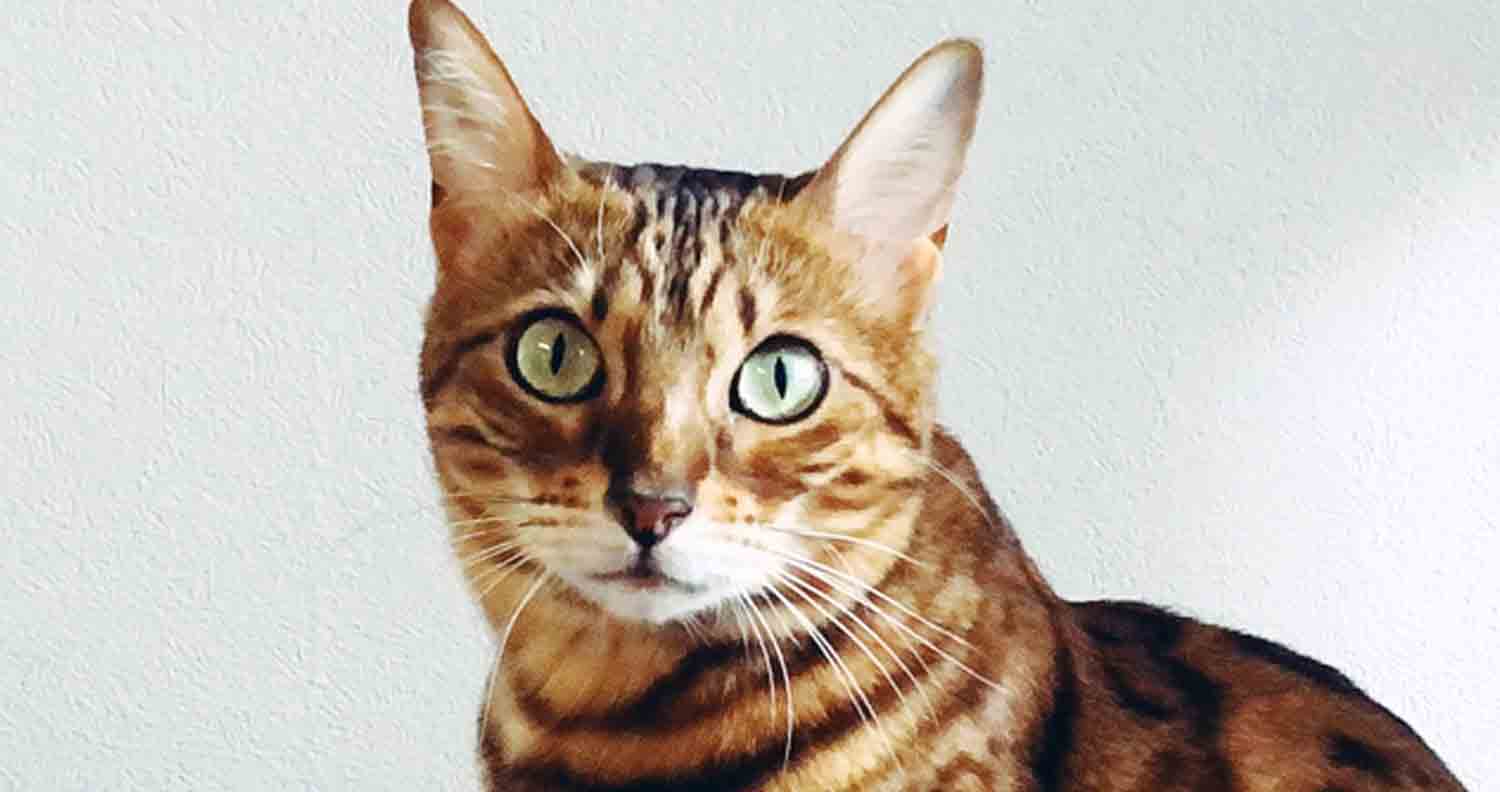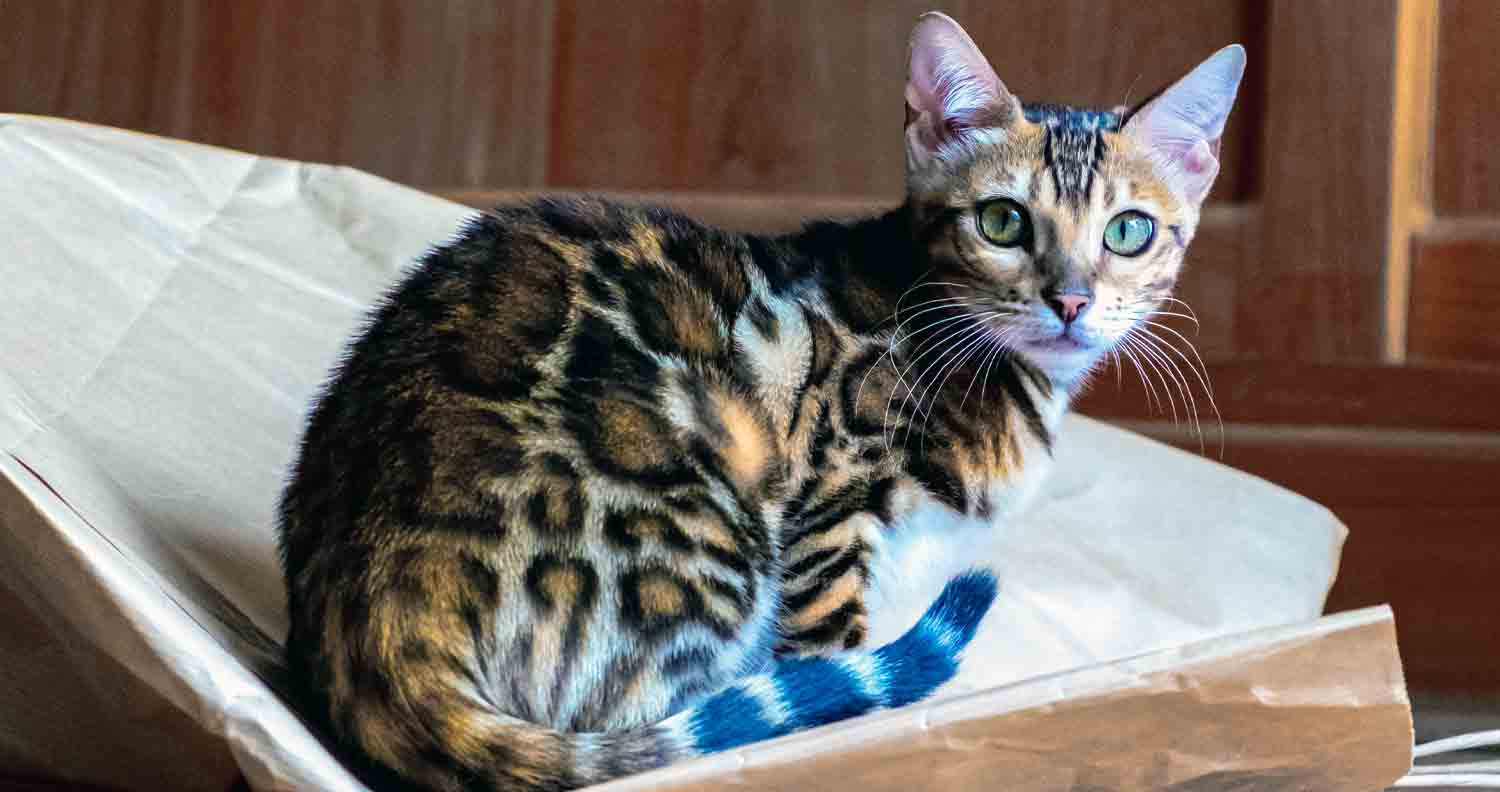Cat Breed Profile: Bengal Cat Breed
Share:

Any leopard fans in the house? Well, me too! But having a leopard as your pet can be a bit too much. Instead, get a Bengal cat!
It looks like a leopard, in fact, this breed came into existence due to selective breeding between Asian leopard cats and domestic cats. Their unique spots, playful nature, and active lifestyle will make you doubt if you actually got a mini leopard!
But unlike a leopard, the Bengal cat gets along well with kids and other pets. In this article, we will be discussing this high energy breed in detail.
A Brief History of Bengal Cats
The story of how the Bengal cat came into existence might surprise you. A woman, Jean Sudgen of Yuma, purchased an Asian leopard cat (female) in 1963 and kept her with a male black domestic cat.
The two cats mated and the female gave birth to two cute kittens- male and female. The female survived and later mated back with the father to give birth to a spotted male and a black female.
Jean later contacted geneticist Dr. Willard Centerwall in 1980. He was working on a breeding programme as the part of a study involving feline leukaemia. Asian leopard cats are immune to feline leukaemia, hence, Dr. Willard was working on cross breeding Asian leopard cats with domesticated cats.
One thing led to another and eventually in 1986, the Bengal cat got recognized as a new cat breed by the International Cat Association. In 1991, the breed won championship status. There was a time when a license was required to own a Bengal cat in London. It got removed in 2007.
Bengal Cat Breed Overview
Bengal cat brings the best of both the worlds. It looks wild but has the sweet nature of a domestic cat. These cats are medium to large in size and have muscular bodies with strong bones.

Bengal Cat Characteristics/Attitude
These wild-looking cats have the ability to surprise their human parents with their friendly and lovable nature. But do not mistake their docility for laziness for their ancestors were the Asian leopard cats!
It is a myth that Bengal cats are aggressive. In reality, they are no more aggressive than your average house cat. These furry felines love water. So, do not be surprised if you catch them playing water sports with a dripping tap. They might even try to bathe with you!
Bengal cats are known to form strong close bonds with their owners and their families provided you too give them love, care, and affection. If you ever wanted a cat you could train, Bengal cats are the blessing in disguise then.
They are quick learners and intelligent. You can, in fact, train them to flush toilets and open doors. But don’t expect them to do it when you please. Be prepared to have your bengal kitty walk in on you while you’re in the bathroom. These ninja cats are very smart, indeed!
Bengal Cat Characteristics & Attitudes
Bengal Cat Breed Care
Bengal cats are intelligent, active, adventurous, and curious. Their nature can sometimes lead them into trouble. This is why many Bengal cat human parents prefer to train them to walk on leash. Thus, they can enjoy the outdoors while also being safe.
It is important to begin harness training from their kittenhood. Adult Bengal cats do not adjust to sudden new changes like wearing a harness or walking on a leash.
Their intelligence and agility keeps them active throughout the day. If not exercised properly, they would rather pick up new tricks you won’t appreciate as much. These beautiful kitties love climbing high and watch the world perched atop. So, make sure you install cat climbing posts and pillars.
Since these cats are curious and brainy, give them interactive toys. They have shorthaired coats, so a quick few minutes groom every week is enough to keep the coat in the best health. Make sure you trim their nails every couple of weeks and do provide a scratching post.
Bengal cats do not need a bath and given their love for water, they surely will find a way to get wet. If that happens, dry their coat thoroughly. And of course, keep your toilet seat down. You never know when your cat might decide it’s bathing time!
Use a pet toothpaste to clean their teeth. Bengal cats are best kept indoors to prevent them from picking brawls and catching disease from other feral cats. It is important to get them a thorough checkup at the vet once a year. Discuss the vaccination plan with them.
Your new Bengal cat will adjust well with your pets like dogs and other cats. But be careful if you have guinea pigs, hamsters, or other small pets. They might trigger your leopard-like kitty’s natural instincts to prey.
Bengal cats adjust pretty well with children. In fact, they can become close friends due to similar penchant to play and goof around. If you have kids, better look for a kitten that can be raised around your children.
Young children should never be left unsupervised around a cat or kitten. It is for the safety of both of them. Kittens are fragile and your toddler can be stronger than you think. Similarly, an older cat might not be interested in playing and can react adversely if provocated.

Bengal Cat Breed Common Health Issues
Bengal cats are overall healthy cats. They will need the same immunizations as other pet cats. While their ancestor Asian leopard cats were immune to feline leukemia virus, unfortunately Bengal cats aren’t.
It is best you get your Bengal kitty vaccinated against feline leukemia for protection. This is even more important if your cat comes in contact with other cats or stays outdoors.
Ironically, purebred Bengal cats are more prone to genetic disorders because of the limited gene pool. They are at the high risk of developing following medical conditions:
You can get your cat genetic tested for a few of these disorders. For others, there are tests available when early symptoms show up.
Recommended diets for the Bengal Cat Breed
You can give your Bengal kitty standard cat food available in the market. But remember not all cat foods are created equal. Your cat might thrive on a grain-free diet tending more towards their natural raw food. It is even more important to give them their natural diet if your cat is from the first three generations.
These days there are high-quality formulated grain-free cat foods available in the market. Make sure your cat is able to meet its high protein requirements. Bengal cats love playing in water but might not be too keen on drinking it. Encourage them to drink water. You can also give wet food to keep them hydrated.
Bengal Cat Pros & Cons

Pros
Cons
More Bengal Cat Facts You Might Want to Know
I love Bengal cats for their remarkable nature and independent streak. Mine was raised around dogs and didn’t mind being hugged. In fact, she lived to grab attention! How your cat turns out depends upon the way you raised it.
Here are some more quick facts:
Final Thoughts on the Bengal Cat Breed
If you want an exotic looking cat full of personality, Bengal cat is the right choice. They are independent, sharp, and active. These cats with striking coat patterns adapt well to being around kids and other pets (dog and cats). Shower your kitty with lots of love and affection to see them adoring you back!

Get 30% off and FREE shipping on cat supplies!
U.S.A only
To Find out why we recommend chewy.com, click here
Affiliate disclosure : We Love Cats and Kittens is a participant in several affiliate programs including the Amazon Services LLC Associates Program, and the Chewy affiliate program. These are affiliate advertising programs designed to provide a means for sites to earn advertising fees by advertising and linking to products on their sites. If you click on links in our blog posts and articles we may be paid a commission.
Share:

